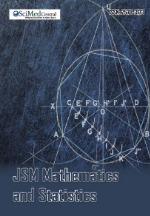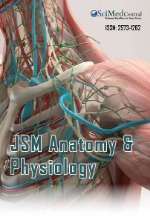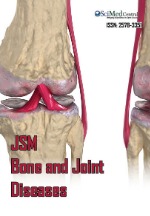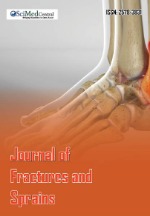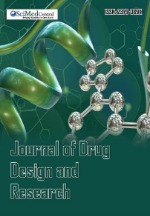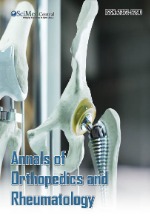Exploring Heat and Mass Transfer Dynamics in Vertical Coaxial Cylinders with Effects of Thermal Generation
- 1. Department of Mathematics, Aliko Dangote University of Science and Technology, Nigeria
- 2. Department of Mathematics, Yusuf Maitama Sule University, Nigeria
Abstract
This research offers an examination of the impacts of geometric, thermal, and electromagnetic parameters on magnetohydrodynamic (MHD) natural convection flow of an electrically conducting fluid within a vertical concentric annulus. Exact solutions for temperature, velocity, induced current density and induced magnetic fields were achieved by solving the dimensionless governing equations, alongside expressions for critical parameters such as skin friction (t), mass flux (Q), and induced current flux (J). The analysis reveals that heat generation/absorption (S) and the annular gap ratio (l) play pivotal roles in modulating thermal and flow characteristics, significantly influencing Nusselt numbers and skin friction coefficients. Heat absorption enhances flow gradients, while heat generation promotes thermal buoyancy, with both effects being amplified by larger annular gaps. The Hartmann number (Ha) demonstrates a suppressive influence on velocity and mass flux, driven by the Lorentz force, which dampens fluid motion and alters magnetic field behavior. These findings underscore the intricate interplay of physical parameters in shaping MHD flow dynamics and offer valuable insights for optimizing thermal management and energy applications in advanced MHD systems.
Keywords
- Magnetohydrodynamics (MHD); Natural convection flow; Heat generation/absorption; Hartmann number; Thermal management; Induced magnetic field.
CITATION
Muhammad MY, Gambo YY, Lawan MA (2025) Exploring Heat and Mass Transfer Dynamics in Vertical Coaxial Cylinders with Effects of Thermal Generation. Chem Eng Process Tech 10(1): 1096.
INTRODUCTION
The utilization of annular geometries in heat exchanger analysis and design has become increasingly prevalent in transport phenomena research, driven by their diverse applications in both geophysics and engineering. These geometries are integral to various technologies, including the development of MHD power systems, studies on geothermal energy extraction, the handling of nuclear fuel waste, and advancements in metal and alloy solidification techniques. Similarly, natural convection along vertical cylindrical structures plays a key role in technological applications, agriculture, oceanographic studies, and geothermal energy production.
The exploration of transport processes in annular configurations extends to solar energy harvesting, MHD- based power generation, and thermal recovery techniques in oil extraction. In magnetohydrodynamics, applications such as plasma confinement are noteworthy, whereas in oceanography, MHD flow meters are employed to estimate the speed of vessels by linking induced voltage to the flow rate. The incorporation of a heat source or sink within a concentric annulus offers a method to enhance fluid flow behavior [1]. Historical contributions to this field include Couette's pioneering study on flow of incompressible, viscous fluid in concentric annular spaces, which introduced an effective technique for measuring fluid viscosity [2]. Investigations into interactions between MHD and natural convection in an open-ended vertical concentric annuli play a critical role in enhancing the heat removal systems of nuclear reactor, improving both operational safety and energy efficiency [3]. Research focusing regarding the effects of radial and induced magnetic fields on heat transfer and fluid flow in these geometries has advanced techniques for geothermal energy extraction [4]. Additionally, studies on open-ended concentric annular configurations have deepened our understanding of fluid mechanics in MHD propulsion systems [5]. The examination of magnetic fields in such systems has also proven valuable in optimizing industrial workflows, contributing to greater energy efficiency and productivity [6]. Furthermore, exploring the interplay between vertical annuli and the interactions of magnetic fields with natural convection has facilitated the development of advanced MHD systems designed to harness renewable energy resources more effectively [7]. In related research, smith et al. [8], studied MHD natural convection within horizontal annular spaces, emphasizing
how magnetic field intensity impacts flow consistency and improves heat exchange. Similarly, numerical simulations conducted by Jones et al. [9], on MHD convection within square enclosures highlighted the critical role of the magnetic Prandtl number in shaping flow patterns and thermal conduction properties.
Creative approach for analyzing natural convection flows has been introduced by Gray et al. [10-13], offering approximate equations derived using this novel approach. The study of natural convection flows in magnetohydrodynamic (MHD) fluids has drawn significant interest due to their extensive applications in fields such as geophysics, astrophysics, meteorology, aerodynamics, and technologies including MHD power generation, boundary layer control, and energy systems. Moreover, MHD applications span industries like petroleum processing, crude oil purification, and material manufacturing processes including processes like extrusion, metal shaping, continuous casting, and fiber production for glass and polymers. This method validates the Boussinesq approximation, which is widely applied to Newtonian fluids or gases under the assumption of constant properties. The model incorporates four distinct reference temperatures for introducing the Boussinesq approximations, using power-law correlations and equations of state to evaluate density and transport properties with high precision. Magnetohydrodynamics (MHD), which integrates the principles of electromagnetism and fluid mechanics, enables fluid propulsion and control through Lorentz forces. These forces arise when electric currents interact with magnetic fields. The introduction of a magnetic field to an electrically conductive fluid results in a significant reduction in motion perpendicular to the field due to the magnetic resistance generated [14,15].
Heat transfer dynamics are significantly influenced by the heat generation or absorption characteristics of fluids, which play a critical role in numerous real-world applications. Examples include convection within the Earth's mantle, heat dissipation in post-accident scenarios, modeling of fires and combustion processes, exothermic and endothermic chemical reactions, management of metal waste from nuclear fuel, and various nuclear energy systems. Basanth [16], investigated the effects of heat generation and absorption on both heat transfer and fluid flow, highlighting their importance. These phenomena are particularly impactful due to the terms related to volumetric heat generation or absorption, can substantially alter heat transfer behavior, especially at elevated temperatures. The studies conducted by Ramamoorthy et al. [10,17-20], explored the comparison between MHD and classical velocity profiles within the gap of two rotating coaxial cylinders subjected to a radial magnetic field, while assuming the effects of the generated magnetic field can be considered insignificant. However, the assumption of disregarding the induced magnetic field has been a topic of considerable discussion. Evidence indicates that excluding the effect of the generated magnetic field leads to lower velocity profiles compared to cases where it is included. This suggests that the generated magnetic field has a significant role in enhancing the velocity as well as the generated current density, as seen in the studies conducted by Jain et al. [20-24].
In various natural convection processes driven by heat absorption, these effects alter the temperature profile and, as a result, decrease particle deposition rates. This phenomenon is critical in applications such as nuclear reactor cooling, electronic chip design, semiconductor wafer processing, and modeling of fire and combustion dynamics. Smith [8], pointed out the substantial influence of a radial magnetic field on the flow dynamics and thermal transfer characteristics inconcentric cylindrical systems. The existence of the magnetic field alters stability of flow and influences the distribution of temperature. In their numerical simulations, Brown et al. [25], studied MHD natural convection in the presence of radial magnetic fields and found that the magnetic field induced additional fluid movement, that subsequently improved heat transfer relative to situations free of magnetic influences.
Gupta et al. [26], investigated techniques to enhance heat transfer in MHD natural convection flows subjected to radial magnetic fields. Their research demonstrated that the application of the magnetic field decreases the boundary layer thickness, resulting in improved heat transfer performance near the inner and outer cylinders. The impact of an induced magnetic field on fully developed convection flow within an annular micro-channel was analyzed by Jha et al. [27], who reported an increase in surface skin friction when the magnetic field was introduced. Meanwhile, Chamka [28], explored the two- dimensional laminar flow of an incompressible fluid over a flat surface and discovered that variations in the Hartmann number and wall suction velocity strongly influence the local Nusselt number. Furthermore, Chamka [29], utilized the finite volume approach to study laminar convection in electrically conductive fluids, incorporating the effects of heat generation and absorption. Their analysis revealed that internal heat generation reduces the average Nusselt number.
The investigation of fully established magneto-natural convection in vertical annular geometries with Uniform iso-flux heating was carried out by Singh et al. [30-32]. In these studies, the continuous heating along the cylinder's boundary generates a significant thermal energy gradient, whichaltersthesystem's overall behavior. Acomprehensive analysis of iso-flux conditions at the cylinder's inlet temperature field was proposed by Ramamoorthy [17]. In a related investigation, Ramamoorthy [17], explored the magnetohydrodynamic (MHD) flow and thermal transfer over a contracting infinite cylinder in a porous medium, where the cylinder's radius changes with time. By applying similarity transformations and iterative power series techniques, the research investigated the impact of heat generation, suction, and magnetic fields on both momentum and temperature profiles. The key findings revealed distinct solutions for skin friction and Nusselt numbers, with stronger magnetic forces diminishing secondary solutions. These results are relevant to practical applications in fluid mechanics and heat transfer systems [33].
Additionally, Yusuf [34], investigated the effects of thermal absorption during natural convection currents along a vertically oriented coaxial cylinder with constant uniform heating at the inner cylinder. This research provides valuable insights into the intricate relationships involving magnetic fields, thermal influences, and spatial arrangements, highlighting their impact on fluid dynamics in vertical concentric annuli. This research examines the impact of the Hartmann number, thermal generation/ absorption, and the annular gap on the influence of magneto-natural convection in the processes of heat and mass transfer along a vertically aligned, infinitely long coaxial cylinder with thermal heating an area that has not been extensively studied before. Analytical solutions are formulated for the ordinary differential equations in their dimensionless form. streamlining the original equations and facilitating accurate predictions of distinct behaviors as key parameters change.
MATHEMATICAL FORMULATION
The steady-state flow of electrically charged fluids is described through the fundamental hydrodynamic equations along with Maxwell's equations of electromagnetism [1,34]. These equations are represented as follows in vector form:
Continuity Equation: Ñ × V=0# (1)
Momentum equation:
Magnetic field equation:
Energy equation:
The setup of the research is depicted in Figure 1.
Figure 1: Model's geometry [34]
In this setup, natural convection heat and mass transfer of a fully developed steady, laminar, viscous, and incompressible fluid that conducts electricity is examined within a vertically oriented, infinitely long concentric annulus. The radial direction, referred to as R′, is gauged from the center of the cylinder moving outward, The z′-axis is oriented along the direction of the coaxial cylinders and extends in the vertical direction. The applied magnetic field has a radial outward direction, represented by
temperatures of the outer cylinder and the surrounding air are denoted as T ' and T ' , respectively, while a and b denote the radii of the inner and outer cylinders. The components of velocity in the R',q ' , and z′ directions are represented by U ' ,U ' , and U ' , respectively. In the case of fully developed flow, the velocity aligns with the z′-axis of the cylinders, resulting in U ' ' = 0 . Due to the fully developed nature of the flow and the infinite length of the cylinders, the flow characteristics depend only on the radial coordinate R′. The components of velocity and magnetic field for the model are represented as (0, 0,U ' (R' )) and, accordingly, as outlined in [34].
Assumptions
1. The flow is axisymmetric with no swirl, so 0 θ ∂ = ∂ and U 0 θ = .
2. The flow is parallel U(R) = 0
3. Pressure is constant along the flow direction 0 P z ∂ = ∂
4. The axial direction of the flow is full developed, so 0. z ∂ = ∂
5. Newtonian and incompressible (is constant) flow.
Equations (6) and (7) provide the gradient and Laplacian operators, respectively.
With ∇2 and ∇ applied to the magnetic field ' ( ) ' ' z H R and velocity ' ( ) ' ' z U R . Using the aforementioned assumptions, we obtain eqns. (8)-(10).
For The Lorentz force Term (J × B) we use the Ampare's Law for a steady state ∇ × B = µeJ and the relation B = µeH we get
Also
From the magnetic field component we get
Therefore,
The primary governing equations for the flow formation, based on equations (8)-(10) and incorporated into equations (1)-(5) under the Boussinesq approximation, are as follows [1, 34]:
The boundary conditions for equations (12), (13), (13) and (13) are specified as follows:
In the equations presented, the following symbols represent various physical quantities: U′ denotes fluid velocity, g signifies acceleration due to gravity, β indicates the coefficient of volume expansion, µe stands for magnetic permeability, ρ represents fluid density, η refers to magnetic diffusivity, Cp signifies the thermal conductivity of the fluid, D represents the diffusion coefficient, K is the chemical reaction parameter, C′ stands for concentration, T′ indicates fluid temperature, ' Tf corresponds to ambient temperature, and QO symbolizes the heat generation and absorption parameter, where QO >0 implies heat generation and QO <0 implies heat absorption.
By applying non-dimensionalization to Equations (12), (13), (14), (15) and (16), we use the following set of nondimensional variables and parameters:
Utilizing these variable and parameters in eqns. (12)-(16) we obtained the following non-dimensional equations:
Non-dimensional governing equations
METHODS
The approach used in this research is closely follows the approach described in [34]. An analytical solution for the velocity,temperature distribution, induced magnetic field, and concentration profile is derived by solving the nondimensional governing linear simultaneous ordinary differential equations, subject to the appropriate non- dimensional boundary conditions. Additionally, the numerical values for key quantities such as induced current flux, skin friction, mass flux, and Nusselt number are also computed.
Analytical Solution
The equations from (17) to (20) have been solved, and the following analytical results were derived, in accordance with the boundary conditions outlined in (21): velocity, induced magnetic field, temperature distribution, and concentration profile.
Skin friction on the inner and outer cylinders was determined using Eqn. (22), and the mass flux was determined using Eqn. (27), (28), and (29), respectively.
Eqn. (24) was used to obtained Nusselt's number on the inner and outer cylinders as given in (30) and (31)
Equation (23) was employed to calculate the induced current density in the θ-direction by utilizing Maxwell's equations, and subsequently, the induced current flux was derived from the induced current density Jθ as stated below:
The constants Ki for Ci = 1, 2, 3,…, 29 and Ci for i = 1, 2, 3,…, 8, appearing in equations (22)–(31), are detailed 163
in Appendix 8.
RESULTS AND DISCUSSION
MATLAB was used to visualize the results of the analytical solution to the governing equations to assess the fluid flow. Three crucial characteristics that were essential to this investigation were the focus of the analysis: the Hartmann number, the radii ratio, and heat generation/ absorption. When all other factors were held constant and each parameter was examined separately, the graphs that are displayed in Figures from 2a to 6b.
Figure (2a): The influence of the annular region with λ = 2,2.5 and 3 on the temperature distribution θ (R)(or θ (r)) at S = 1.0.
Figure (2b) The impact of the heat generation/absorption parameter, with S = 1.0, -2.0,0.0,1.0,2.0, and 3, on the temperature distribution θ ( ) at λ = 2.
Table 1,2, Table 3, and Table 4, respectively, present the numerical computation of (30)-(31), (27)-(28), (29), and (33).
Table 1: Comparison of Nusselt Number Nu with Previous Published Article for S =-1,-2,1,2 and l = 2.3
|
S |
Existing results [1] |
|
Present Results |
λ |
||
|
Nu1 |
Nuλ |
|
Nu1 |
Nuλ |
||
|
-1.0 |
2.02472 |
0.262358 |
|
2.0247 |
0.26236 |
2.0 |
|
-1.0 |
2.23072 |
-0.589762 |
|
2.2307 |
-0.58976 |
3.0 |
|
-2.0 |
2.60674 |
-0.196631 |
|
2.6067 |
-0.19663 |
2.0 |
|
-2.0 |
3.55120 |
-1.482930 |
|
3.5512 |
-1.4829 |
3.0 |
|
1.0 |
0.860674 |
1.18034 |
|
0.86067 |
1.1803 |
2.0 |
|
1.0 |
-0.410239 |
1.19659 |
|
-0.41024 |
1.1966 |
3.0 |
|
2.0 |
0.278652 |
1.63933 |
|
0.27865 |
1.6393 |
2.0 |
|
2.0 |
-1.730720 |
2.08976 |
|
-1.7307 |
2.0898 |
3.0 |
Table 2: Nusselt numbers Nu for different values of l and S.
|
S |
λ |
Nu1 |
Nuλ |
|
-1 |
2 |
2.0247 |
0.26236 |
|
-1 |
3 |
2.2307 |
-0.58976 |
|
-2 |
2 |
2.6067 |
-0.19663 |
|
-2 |
3 |
3.5512 |
-1.4829 |
|
1 |
2 |
0.86067 |
1.1803 |
|
1 |
3 |
-0.41024 |
1.1966 |
|
2 |
2 |
0.27865 |
1.6393 |
|
2 |
3 |
-1.7307 |
2.0898 |
Table 3: The table below presents the calculated skin friction values at the inner and outer cylinders for various values of l, S, and Ha.
|
S |
Ha |
λ = 1.8 |
λ = 2.0 |
λ = 3.0 |
|||
|
τ1 |
τλ |
τ1 |
τλ |
τ1 |
τλ |
||
|
-1.0 |
2.1 |
27.2021 |
22.8839 |
28.2997 |
23.4020 |
31.5924 |
25.8651 |
|
-1.0 |
3.0 |
2.7804 |
2.2114 |
2.9182 |
2.2895 |
3.2660 |
2.6597 |
|
-1.0 |
4.1 |
1.3761 |
1.0433 |
1.4382 |
1.0874 |
1.5606 |
1.3121 |
|
-2.0 |
2.1 |
34.5229 |
29.1080 |
38.4255 |
31.8830 |
60.8763 |
50.3794 |
|
-2.0 |
3.0 |
3.2944 |
2.6652 |
3.5931 |
2.8887 |
4.8216 |
4.2130 |
|
-2.0 |
4.1 |
1.5356 |
1.1923 |
1.6342 |
1.2766 |
1.9098 |
1.7426 |
|
1.0 |
2.1 |
12.5604 |
10.4355 |
8.0480 |
6.4402 |
-26.9752 |
-23.1635 |
|
1.0 |
3.0 |
1.7524 |
1.3039 |
1.5686 |
1.0913 |
0.1548 |
-0.4469 |
|
1.0 |
4.1 |
1.0570 |
0.7452 |
1.0463 |
0.7089 |
0.8622 |
0.4509 |
|
2.0 |
2.1 |
5.2396 |
4.2114 |
-2.0779 |
-2.0407 |
-56.2591 |
-47.6778 |
|
2.0 |
3.0 |
1.2384 |
0.8501 |
0.8938 |
0.4921 |
-1.4008 |
-2.0002 |
|
2.0 |
4.1 |
0.8975 |
0.5962 |
0.8503 |
0.5196 |
0.5130 |
0.0204 |
Table 4: Numerical Values of Mass Flux and Induced Current Flux in dimensionless form
|
S |
λ |
Ha |
Q (Mass Flux) |
J (Current Flux) |
|
-1.00 |
1.80 |
2.100 |
1.230 × 103 |
6.7222 |
|
3.000 |
9.822 × 100 |
0.5512 |
||
|
4.100 |
1.797 × 100 |
0.2152 |
||
|
2.00 |
2.100 |
1.655 × 103 |
7.0375 |
|
|
3.000 |
1.368 × 101 |
0.5771 |
||
|
4.100 |
2.533 × 100 |
0.2252 |
||
|
3.00 |
2.100 |
5.652 ´ 103 |
9.9904 |
|
|
3.000 |
5.043 × 101 |
0.8192 |
||
|
4.100 |
9.167 × 100 |
0.3198 |
||
|
-2.00 |
1.80 |
2.100 |
1.574 ´ 103 |
8.6044 |
|
3.000 |
1.252 × 101 |
0.7056 |
||
|
4.100 |
2.272 × 100 |
0.2754 |
||
|
2.00 |
2.100 |
2.276 × 103 |
9.6766 |
|
|
3.000 |
1.867 × 101 |
0.7935 |
||
|
4.100 |
3.413 × 100 |
0.3097 |
||
|
3.00 |
2.100 |
1.130 × 104 |
19.9809 |
|
|
3.000 |
9.796 ´ 101 |
1.6384 |
||
|
4.100 |
1.705 × 101 |
0.6395 |
||
|
1.00 |
1.80 |
2.100 |
5.414 × 102 |
2.9578 |
|
3.000 |
4.427 × 100 |
0.2425 |
||
|
4.100 |
8.472 × 10-1 |
0.0947 |
||
|
2.00 |
2.100 |
4.143 × 102 |
1.7594 |
|
|
3.000 |
3.695 × 100 |
0.1443 |
||
|
4.100 |
7.745 × 10-1 |
0.0563 |
||
|
3.00 |
2.100 |
-5.640 × 103 |
-9.9904 |
|
|
3.000 |
-4.463 × 101 |
-0.8192 |
||
|
4.100 |
-6.596 × 100 |
-0.3198 |
||
|
2.00 |
1.80 |
2.100 |
1.971 × 102 |
1.0756 |
|
3.000 |
1.730 × 100 |
0.0882 |
||
|
4.100 |
3.723 × 10-1 |
0.0344 |
||
|
2.00 |
2.100 |
-2.061 × 102 |
-0.8797 |
|
|
3.000 |
-1.297 × 100 |
-0.0721 |
||
|
4.100 |
-1.049 × 10-1 |
-0.0282 |
||
|
3.00 |
2.100 |
-1.129 × 104 |
-19.9809 |
|
|
3.000 |
-9.216 × 101 |
-1.6384 |
||
|
4.100 |
-1.448 × 101 |
-0.6395 |
In this research, the impact of the heat generation/absorption parameter, annular gap, and Hartmann number on steady, magneto- natural convection fully developed flow are investigated in a vertical concentric annulus. The flow is analyzed under the assumption of an iso-thermal boundary condition at both the inner and outer cylinders. The fluid in question is a viscous, incompressible, electrically conducting medium. Previous studies, such as those in [1,34], have established that the Hartmann number (Ha) lies within the range reported. The equations (22), (23), (32), and (24) exhibit similar patterns for the profiles of velocity, induced magnetic field, induced current density, and temperature. Additionally, the effects of the annular gap (????), heat absorption parameter (S), and Hartmann number (Ha) are consistent with the trends found in earlier research such as [1,34].
Figures 2a and 2b demonstrate the combined influence of the heat generation/absorption parameter and the proportion of the outer radius to the inner radius in the temperature distribution. The ratio of the outer radius to the inner radius significantly influencing in enhancing the temperature profiles under both heat source and heat sink conditions, highlighting its role in the thermal behavior of the system. Furthermore, as the heat source/sink parameter increases, there is an evident increase in the temperature profiles. This rise is mainly attributed to the reduction of the thermal boundary layer which promotes more efficient heat transfer. These results emphasize the crucial relationship between geometric ratios and thermal parameters in determining the temperature distribution within such systems.
Figure 3a illustrates how the annular region affects the velocity profile,
Figure 3: Influence of Annular gap and heat generation/absorption on Velocity profile (u(R)).
illustrating variations in flow behavior across different gap widths larger gaps allow greater fluid mobility, resulting in a flatter velocity distribution near the center and reduced peak velocities; in contrast, smaller gaps exhibit sharp velocity peaks at the center with rapid decreases near the walls due to strong shear forces and no-slip boundary conditions As the gap widens, the flow becomes more uniform with reduced wall-induced viscous effects and smoother gradients these findings underscore the critical role of the annular gap in controlling flow characteristics, particularly in magnetohydrodynamic (MHD) systems requiring precise flow uniformity.
Figure 3b illustrates the impact of heat generation/ absorption on the velocity profile. At lower values of the , the velocity peaks near the center and gradually decreases toward the boundary, driven primarily by buoyancy effects. As the parameter increases, thermal energy enhances buoyancy, but higher values introduce magnetic damping due to the Hartmann number, leading to flatter velocity profiles with reduced peak values. At low parameter values, buoyancy dominates, resulting in sharper peaks, while higher values promote thermal diffusion, smoothing the profile. Additionally, increasing the Hartmann number suppresses velocity through enhanced Lorentz forces, leading to more gradual variations and reduced peak velocities. This interplay highlights the competing influences of thermal and magnetic forces on velocity distribution.
Figure 4a demonstrates the influence of the annular space on the magnetic field,
Figure 4: Effect of Annular gap and heat generation/absorption on Magnetic field (H(R)).
as reflected in the induced current density profiles. For higher λ, magnetic field begins at zero, rises with radial distance R, peaks at 0.8 when R =1.5 and then decreases symmetrically. When λ is reduced, the peak value of magnetic field decreases to 0.6, and the profile becomes more gradual, indicating a reduction in field strength.
These results highlight that larger annular gaps promote stronger magnetic fields by reducing resistance and enabling greater current flow. Conversely, smaller gaps increase magnetic confinement, weakening the field strength and the fluid-magnetic interaction. This relationship underscores the importance of optimizing annular region in MHD systems, as wider gaps enhance magnetic influence, while narrower gaps diminish field strength, thereby affecting flow and heat transfer performance.
Figure 4b illustrates the role of the heat generation/ absorption parameter in modulating the induced magnetic field in MHD systems. As this parameter increases, the induced current density intensifies, indicating a stronger magnetic field response. Lower parameter values correspond to moderate effects on the magnetic field, with weaker interactions between thermal gradients and the flow. In contrast, higher values amplify the induced current density, suggesting enhanced coupling between thermal effects and magnetic forces. These results highlight the critical influence of heat generation or absorption on the strength and distribution of the magnetic field in MHD applications.
Figure 5a indicates that wider gaps lead to a more uniform magnetic field distribution and reduced peak values,
Figure 5: Effect of Annular gap and heat generation/absorption on Induced current density (Jq). (a) Effect of annular region ???? = 1.5,2.5 on Induced current density ???????? (????) at ???? = 1; (b) Effect of heat absorption. parameter (???? = 0.5, 1.5) on Induced current density at ???? = 2
reflecting diminished confinement. Conversely, narrower gaps enhance confinement, producing sharper gradients and higher localized current densities near the inner boundary. The Hartmann number further modulates this effect; increased values amplify magnetic damping and suppress induced current density. Overall, smaller gaps result in pronounced gradients and stronger localization near boundaries, whereas larger gaps yield smoother, more evenly distributed profiles.
Figure 5b demonstrates that the heat generation parameter significantly affects the behavior of induced current density. For smaller parameter values, the current density exhibits larger initial magnitudes and sharper transitions from negative to positive as radial distance increases. In contrast, higher values lead to reduced initial magnitudes and smoother transitions, reflecting less abrupt variations in current density. These trends underscore the role of the heat generation parameter in modulating the strength and direction of induced currents, with larger values producing more uniform profiles and potentially stabilizing effects in MHD systems.
Figure 6a The Hartmann number significantly influences fluid velocity in the annular region.
Figure 6: Effect of Hartmann number on Velocity u(R) and Magnetic field (H(R)). (a) Effect of the Hartmann number Ha = 3,4.1,5λ = 2 on Velocity profile u(R) at S = 1. (b) Effect of the Hartmann number Ha =3,4.1,5λ = 2 on Magnetic field H(R) at S = 1.
At a lower Hartmann number, the reduced magnetic damping permits higher velocity throughout, as buoyancy forces dominate. With a moderate Hartmann number, the velocity decreases due to the stronger Lorentz forces opposing motion. At a higher Hartmann number, the velocity is greatly suppressed across all radial positions, as the dominant magnetic forces effectively damp fluid motion, minimizing velocity.
Finally, 6b The Hartmann number profoundly affects the behavior of the magnetic field within the annular region. For low Hartmann number, magnetic field displays a nearly symmetric distribution about the central axis, with small magnitudes at the boundaries and a gradual increase towards the middle. As Hartmann number increases, the magnetic field intensity grows, particularly near the boundaries, indicating stronger electromagnetic forces, though the distribution becomes less uniform due to enhanced Lorentz forces. A notable transition of magnetic from positive to negative values occurs at higher Hartmann number, signifying a reversal in field direction driven by induced magnetic effects. Additionally, the magnitude of oscillations in magnetic amplifies with increasing Hartmann number, reflecting more intricate interactions between the magnetic field and fluid dynamics.
Table 2 shows how the Nusselt numbers (Nu1 and Nuλ) vary with heat generation/absorption (S) and the annular gap ratio (λ). Negative S values indicate heat absorption, leading to reduced or reversed heat transfer as λ increases, while positive S values suggest enhanced heat transfer, with Nuλ increasing and Nu1 showing variable behavior. In order to achieve efficient thermal management, it is imperative to optimize the effects of heat source/sink and geometry on thermal performance.
Table 3 demonstrate the impact of the Hartmann number (Ha), heat generation/absorption parameter (S), and annular geometry (λ) on the skin friction coefficients (τ1 and τλ) in MHD flows. An increase in Ha consistently reduces τ1 and τλ, signifying the suppressive effect of magnetic fields on flow velocity. Negative S (heat absorption) increases wall shear stress by cooling the fluid and enhancing flow gradients near the walls, whereas positive S (heat generation) reduces τ1 and τλ by inducing thermal buoyancy that offsets shear forces. The effects are more pronounced for higher values of λ, reflecting the role of annular geometry in modulating flow behavior. These findings are pivotal for designing efficient MHD systems with tailored thermal and flow properties.
The numerical values for the induced current density and the mass flux of the fluid flow are presented in Table 4. For Heat generation parameter, induced current flux and mass flux decrease as buoyancy and magnetic forces act synergistically, while heat absorption parameter enhances convective transport, leading to higher mass flow rate and induced current flux. The larger ratio of inner to outer cylinder increases the flow region, boosting the mass flow rate and the induced current flux for heat absorption, but the effect is subdued for heat generation. As Hartmann number increases, the Lorentz force suppresses fluid motion, resulting in a significant reduction in mass flux and a gradual decrease in induced current flux. Lower Hartmann number allows natural convection to dominate, yielding higher mass flux and induced current flux.
These findings highlight the intricate interplay of geometric, thermal, and magnetic factors in shaping MHD flow characteristics. The insights gained are essential for designing efficient MHD systems with precise control over flow and magnetic field distributions, particularly in advanced heat transfer and electromagnetic flow applications.
PHYSICAL SIGNIFICANCE
The impact of these parameters on flow formation offers important insights into the underlying physical significance. Below are some key implications.
- Sound and Vibration: Variations in parameters such as the Hartmann number (Ha), heat generation/ absorption (S), and the annular gap ratio (λ) influence fluid flow dynamics, which can lead to pressure fluctuations and mechanical vibrations. For instance, changes in velocity profiles and induced magnetic fields may result in oscillatory behaviors within the fluid, potentially generating acoustic waves or vibrations in the system's structure.
- Flow Uniformity: For applications requiring consistent flow profiles, such as precision cooling or material processing, optimizing the annular gap width and Ha is critical.
- Thermal Management: Controlling S ensures effective heat transfer while maintaining the stability of the system, especially in high temperature environments.
- Stability vs. Mobility Trade-Off: Adjusting Ha and λ allows designers to achieve a balance between flow stability and mobility, depending on operational requirements.
- Heat Absorption: Systems with negative S may require additional cooling effects management mechanisms because negative Nu suggests a non- standard heat transfer behavior.
- Heat Generation: Although systems with positive S exhibit typical thermal behavior, large l may require optimization to ensure effective heat transfer.
- Balancing Key Parameters: The interplay between the heat source / sink parameters, the magnetic field strength, and the geometric factors must be carefully balanced to achieve the desired thermal and hydrodynamic performance.
- Role of Magnetic Fields: The study highlights the suppressive role of magnetic fields in controlling flow behavior, which can be leveraged for flow stabilization in industrial and engineering processes.
- Guidance for MHD Applications: The results offer valuable guidance for the development of tailored MHD technologies in energy systems, cooling devices, and other thermofluid applications.
These parameters significantly influence the behavior of MHD flows and their careful selection is vital to tailor flow characteristics to meet specific performance objectives in industrial and scientific applications.
COMPARISON OF THE RESULTS
The Table 1 illustrates a comparison of the Nusselt Number with results from previously published articles for values of S = -1, -2,1,2 and λ = 2.3, and it was determined to be similar to the findings reported by [1].
CONCLUSION
This study examines steady magneto-natural convection fully developed flow in vertical concentric coaxial cylinders, influenced by radial and induced magnetic fields, along with heat generation. Based on the figures and numerical results, the following conclusions can be made:
- The width of the annular gap (λ) affects the velocity profile in MHD systems. Larger gaps lead to smoother velocity profiles with lower peak velocities, while smaller gaps result in sharper profiles with higher peaks at the center.
- The heat generation/absorption parameter (S) influences the velocity distribution. At lower
, buoyancy forces dominate, leading to sharper velocity peaks. As
increases, magnetic damping flattens the profile, with buoyancy and thermal diffusion competing.
- The annular gap (λ) also impacts the magnetic field strength. Larger gaps reduce resistance, allowing stronger fields, whereas smaller gaps increase confinement and weaken the field strength.
- As S increases, the induced current density increases, strengthening the magnetic field response. Higher S values intensify interactions between thermal gradients and flow, crucial for heat transfer and fluid dynamics.
- Wider gaps lead to a more uniform magnetic field, whereas narrower gaps create stronger field gradients and localized current densities. The Hartmann number (Ha) dampens these effects, suppressing the current density.
- The heat generation parameter (S) affects the induced current density. At lower S, the current density shows sharper transitions; as
increases, the density becomes more uniform with smoother transitions.
- The Nusselt numbers (Nu1 and Nuλ) exhibit contrasting trends in the heat generation S > 0 and heat absorption S < 0 scenarios. Heat generation enhances the thermal transport across the annular gap, particularly in the outer cylinder (Nuλ), while heat absorption leads to diminished or reversed heat transfer as the annular gap ratio (λ) increases.
- The skin friction coefficients (τ1 and τλ) are significantly influenced by the Hartmann number (Ha) and the heat generation/absorption parameter (S). Increasing Ha reduces τ1 and τλ, reflecting the damping effect of the magnetic field on velocity gradients.
- The Mass flow rate and the induced current density exhibit a declining trend with increasing Ha, as the Lorentz force suppresses the convective motion. In contrast, lower Ha values allow natural convection to dominate, leading to higher mass flux and induced current density.
Overall, the interplay between the annular region, the heat generation parameter, and the Hartmann number is essential for controlling the flow, magnetic field strength, and heat transfer in MHD systems. Optimizing these parameters is crucial for efficient system operation in industrial and scientific applications.
Author Contributions
M.Y.M conducted the literature review and formulated the research problem. M.Y.M, Y.Y.G, and M.A.L carried out the theoretical and analytical analyses. M.Y.M interpreted the results and drafted the conclusion. All authors contributed to reviewing and editing the manuscript.
ACKNOWLEDGMENT
The author sincerely appreciates the anonymous referees for their insightful comments and constructive suggestions, which have significantly enhanced the quality of this article.
REFERENCES
- Kumar D, Singh AK. Effects of heat sourc/sink and induced magnetic field on natural convective flow in vertical concentric annuli. Alexandria Engineering J. 2016: 55: 3125-3133.
- Couette M. Effect of viscous incompressible fluid flow in concentric annuli. Ann Chem Phys. 1890; 21: 433.
- Cheng P, Minkowycz WJ. Free convection about a vertical plate embedded in a porous medium with application to heat transfer from a dike. J Geophysical Res. 1977; 82: 2040-2044.
- Kefayati GR, Ahmadi G, Daryasafar A. Analysis of natural convection in a vertical annulus filled with a conducting fluid under a radial magnetic field using lattice boltzmann method. J Magnetism Magnetic Materials. 2017; 427: 276-286.
- Nayak MK, Mohapatra M. Effect of magnetic field on steady mhd natural convection flow between vertical concentric cylinders with asymmetric heat fluxes. Ain Shams Engineering J. 2016; 7: 1401- 1411.
- Oztop HF, Baytas AC. Magnetohydrodynamic mixed convection in an open-ended vertical cylindrical annulus. J Magnetism and Magnetic Materials. 2018; 448: 305-317.
- Vajravelu K, Hadjinicolaou A. Heat transfer in a viscous fluid over a stretching sheet with viscous dissipation and internal heat generation. Int Commun Heat Mass Transfer. 1993; 20: 417-430.
- Smith J, Johnson R. Effect of radial magnetic field on mhd natural convection in concentric cylinders. Int J Magnetohydrodynamics. 2023; 12: 87-102.
- Jones AB, Wang Q. Numerical simulation of magnetohydrodynamic natural convection in a square enclosure. Int J Heat mass Transfer. 2019; 140: 1186-1201.
- Gray DD, Giorgini A. The validity of the boussinesq approximation for liquids and gases. Int J Heat and Mass Transfer. 1976; 19: 545-551.
- Fahad A, Ilyas K, Ulhaq S, Sharidan S. Influence of thermal radiation on unsteady free convection mhd flow of brinkman type fluid in porous medium with newtonian heating. Math Prob Eng. 2013; 1: 1-13.
- Mamun M, Biswas A, Abdullah A, Anwar H. Natural convection flow along an isothermal vertical flat plate with temperature dependent viscosity and heat generation. J Computational Eng. 2014; 2014: 335- 345.
- El-sha'arawi MI, Sarhan A. Developing laminar free convection in an open ended vertical annulus with a rotating inner cylinder. J Heat Tra. 1981; 103: 552-558.
- Oudina FM, Bessaïh R. Effect of the geometry on the mhd stability of natural convection flows. Institute of Thermo mechanics. 2017; 3: 159-161.
- Jha BK, Apere CA. Combined effect of hall and ion-slip currents on unsteady mhd couette flows in a rotating system. J Physical Society Japan. 2010; 79: 197-206.
- Basanth JK. Transient free convection flow in a vartical channel with heat sinks. Int J Appl Mech Eng. 2001; 6: 279-289.
- Ramamoorthy P. Flow between two rotating cylinders with a radial magnetic field. The Physics of Fluids. 1961; 4: 1444-1445.
- Globe S. Laminar steady-state magneto- hydrodynamic flow in an annular channel. Physics Fluids. 1959; 2: 404-407.
- Dube SN. Magnetohydrodynamic flow between concentric rotating porous cylinder. Def Sci J. 1971; 21: 253-256.
- Jain RK, Mehta KN. laminer hydromagnetic flow in a rectangular chennel with porous wall. Physics Fluid. 1962; 5: 1200-1207.
- Raptis A, Singh AK. Mhd free convectional flow past an accelarated vertical plate. Int Comm Heat and Mass Transfer. 1983; 4: 313-321.
- Sastry VU, Bhadram CV. Hydromagnetic convective heat transfer in vertical pipes. Application Scientific Res. 1978; 34: 117-125.
- Joshi HM. Fully developed natural convection in isothermal vertical annular dut. Int Communications in Heat and Mass Transfer. 1987; 14: 657-664.
- Chaudhary RC, Jain P. Usteady free convection boundary-layer flow past an impulsively started vertical surface with newtonian heating. Romanian J Physics. 2006; 51: 911-925.
- Brown A, Smith J, Johnson R, Williams M, Conducted numerical simulations to investigate the behavior of mhd natural convection flow with radial magnetic fields. J Fluid Mechanics. 2023; 75: 23-135.
- Gupta S, Sharma M. Analysis of heat transfer enhancement in mhd natural convection flow with radial magnetic field. Heat Transfer Engineering. 2023; 38: 487-502.
- Jha BK, Oni MO, Aina B. Steady fully developed mixed convection flow in vertical micro-concentric-annulus with the heat generating/ absorbing fluid: an exact solution. Engineering Physics Mathematics. 2016; 3: 233-337.
- Chamkha AJ, Issa C, Effects of heat generation/absoption and thermophoresis on hydromagnetic flow with heat and mass transfer over a flat surfsce. Int J Numer.Meth Heat Fluid flow. 2000; 10: 432- 449.
- Chamkha AJ. Hydromagnetic combined convection flow in a vertical lid-driven cavity with internet heat generation or absorption. Numer Heat Transf. 2012; 41: 529-546.
- Singh AK, Jha BK, Singh SK. Natural convection in vertical concentric annuli under a radial magnetic field. Heat Mass Transfer. 1997; 32: 399-401.
- Singh RK, Singh AK. Effect of induced magnetic field on natural convection in vertical concentric annuli. Acta Mech Sin. 2012; 12: 315-323.
- Kumar A, Singh AK, Effect of induced magnetic field on natural convection in vercal concentric annuli heate/cooled asymmetrically. J Applied Fluid Mechanics. 2013; 6: 15-26.
- Al-Mdallal KURLYASQM, Aman S, Saranya S, Numerical investigation of heat generation and magnetohydrodynamic flow of fluid over a shrinking infinite long cylinder through porous medium. J Nanofluids. 2022; 11: 285-295.
- Yusuf Muhammad M, Auwal Lawan M, Gambo YY. Heat absorption effect of magneto-natural convection flow in vertical concentric annuli with influence of radial and induced magnetic field. Scientific Rep. 2024; 14: 151-165.
![Figure 1 Model's geometry [34]](https://www.jscimedcentral.com/public/assets/images/uploads/image-1740632263-1.PNG)













































